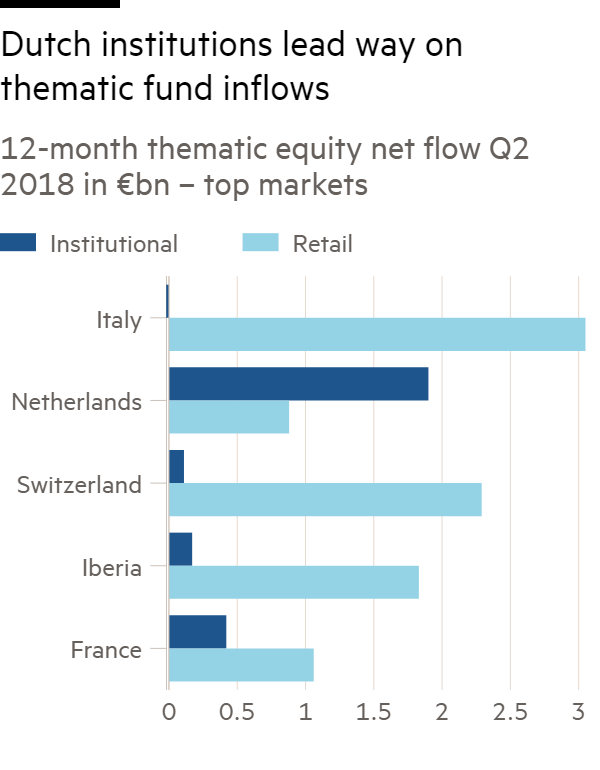Data crunch: Thematic funds struck a chord with European investors last year, pulling in significant sums of money. To a large extent, their popularity can be attributed to the simple fact that they invest in accordance with themes that the general public understand and relate to. With this in mind, could thematic investment approaches improve DC member engagement?
Unlike sector funds, thematic investment considers the potential impact of topical themes and trends across sectors and assets classes. For example, growth in the use of ‘robotics’ not only increases the returns of firms that invent the technology, it also has implications for their supply chains, the users of the technology, and companies associated with the older displaced technologies.
A thematic investment approach is often easy to explain to investors. Even the most financially literate DC members can struggle to get to grips with abstract concepts that litter the financial lexicon.
Equity indices offer a great way of providing low-cost access to an equity risk premium, and smart beta funds can enhance returns by targeting market anomalies or factors, but many members will be unfamiliar with these terms.
A simple sell to members
In contrast, it is widely acknowledged that developments such as technological disruption, ageing demographics and climate change are already impacting societies and economies. That members are exposed to these trends in their everyday lives make the investment hypothesis tangible.
Given that many of these movements are intertwined with societal and environmental considerations, thematic investment may also be a useful vehicle through which schemes can integrate environmental, social and governance principles.

Numerous surveys of DC members have found that members are more willing to engage with their pension, contribute more and bear greater investment risk if they know that their pots are invested responsibly.
There may also be benefits from an investment return perspective. Rather than making short-term bets on the relative return potentials of one asset class versus another, many believe that investing according to their beliefs about long term economic themes is an effective way of generating return.
Funds can be difficult to compare
The main issues with thematic investment are practical. Definitions are often subjective, and this has led to a proliferation in the number of themes and their interpretations, making many strategies offered by asset managers difficult to analyse and compare.
Approaches differ by the subject covered, but also by whether they are single-theme or multi-theme, single-asset class or multi-asset class, active or passive, or use a (bottom-up) thematic lens for security selection or a (top-down) thematic overlay approach.
Better data and analytics (such as scenario testing) may help overcome these barriers, but these issues are likely to exercise opinion for years to come.
Nevertheless, the popularity of thematic funds in markets such as Italy, the Netherlands and Switzerland perhaps offers an interesting lesson in how investment strategies that can communicate effectively with individuals can succeed at sparking greater interest and engagement from the end investor.
Jonathan Libre is a principal in the Emea insights team at Broadridge Financial Solutions.






















